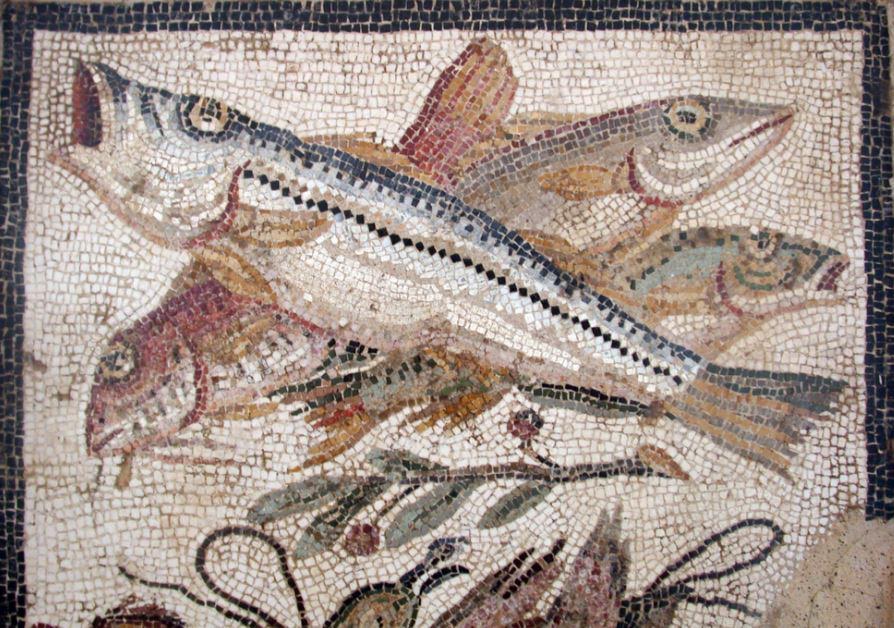Here is lordly garum, a costly gift, made from the blood
of a still-gasping mackerel
(Marcus Valerius Martialis)
If you are a fan of the Roman Empire, or read any fiction or non-fiction about Roman civilization, chances are you will come across a certain salty condiment that many ancients went mad for.
In this edition of Ancient Everyday, we’re going to look at garum.
Now, let me say this: I’m not a big fish-eater.
Yes, I know, I’m half island Greek and don’t all Greeks love to eat fish?
Not this one.
So let me tell you that when I first found out what garum was, what it was made of, I had a titanic wave of nausea wash over me.
But whereas garum would have had me running, most Romans across the Empire loved this stuff!
So, as this is supposed to be an educational piece, I shall set aside my disgust and press on in the interests of history.

A Roman Banquet – spot the hints of garum!
So, what exactly is garum?
Basically, it is fermented fish sauce that was used as a condiment on just about anything. It was created from fish intestines and other parts mixed with salt.
It was immensely popular and supposedly quite healthy in that it was packed with protein, amino acids, minerals and vitamin B.
It was also rich in monosodium glutamate. That’s right…MSG!
Many of you will know MSG as a long-standing chemical compound used in modern food flavouring. It’s been called a ‘silent killer’, and linked to adverse health effects including something called ‘Chinese restaurant syndrome’.
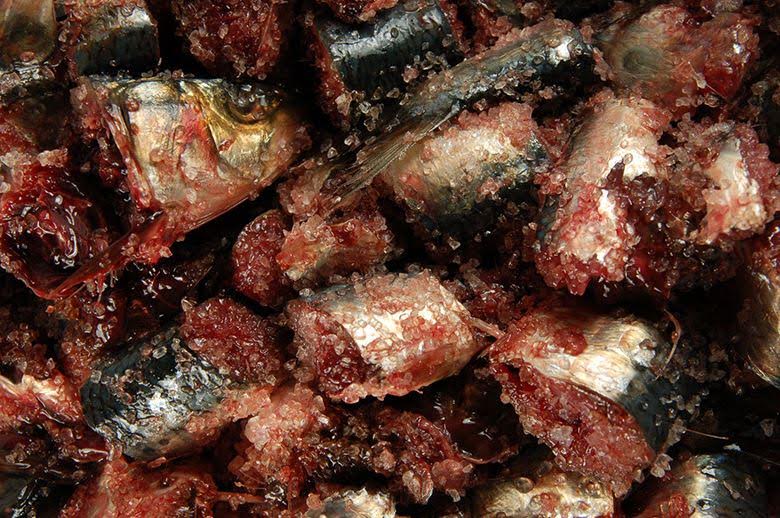
Fish bits used to make garum
Now I don’t know if the Romans experienced anything like garumitis (today’s made-up word), and that doesn’t really matter here. What we need to know is that Romans put it on everything from seafood and chicken, to olives, porridge and more. It was the food seasoning of choice for those who could afford it.
They couldn’t get enough of garum!
Here is Pliny the Elder, the famed natural historian, speaking about garum:
Another liquid, too, of a very exquisite nature, is that known as “garum:” it is prepared from the intestines of fish and various parts which would otherwise be thrown away, macerated in salt; so that it is, in fact, the result of their putrefaction. Garum was formerly prepared from a fish, called “garos” by the Greeks; who assert, also, that a fumigation made with its head has the effect of bringing away the afterbirth.
At the present day, however, the most esteemed kind of garum is that prepared from the scomber, in the fisheries of Carthago Spartaria: it is known as “garum of the allies,” and for a couple of congii we have to pay but little less than one thousand sesterces. Indeed, there is no liquid hardly, with the exception of the unguents, that has sold at higher prices of late; so much so, that the nations which produce it have become quite ennobled thereby. There are fisheries, too, of the scomber on the coasts of Mauretania and at Carteia in Bætica, near the Straits which lie at the entrance to the Ocean; this being the only use that is made of the fish. For the production of garum, Clazomenæ is also famed, Pompeii, too, and Leptis; while for their muria, Antipolis, Thurii, and of late, Dalmatia, enjoy a high reputation.
(Pliny the Elder, Natural History 31.43)
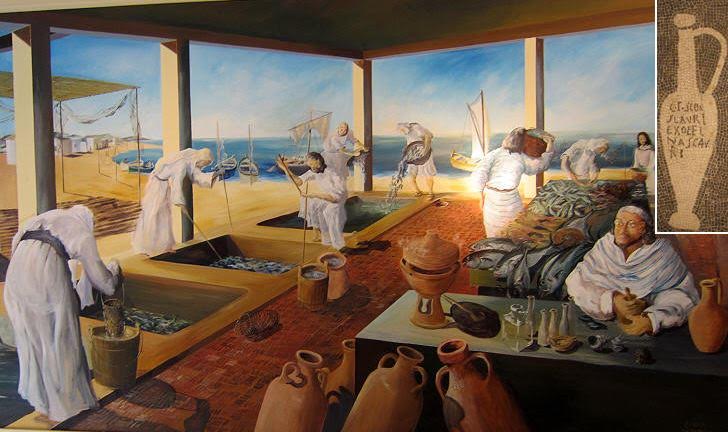
Artist impression of a garum factory
After the garum liquid was extracted, the macerated remains, a pulp called allec, was used by the poorer classes, those who could not afford garum, to flavour their porridge – a grisly tapenade of sorts.
FYI – I prefer maple syrup on my porridge.
Garum production and export was a BIG industry in the Roman Empire, with production centres, a system of distribution by land and sea, amphora marked by the producer etc. etc.
It was also a smelly industry, for obvious reasons, so garum factories were often located outside of cities.
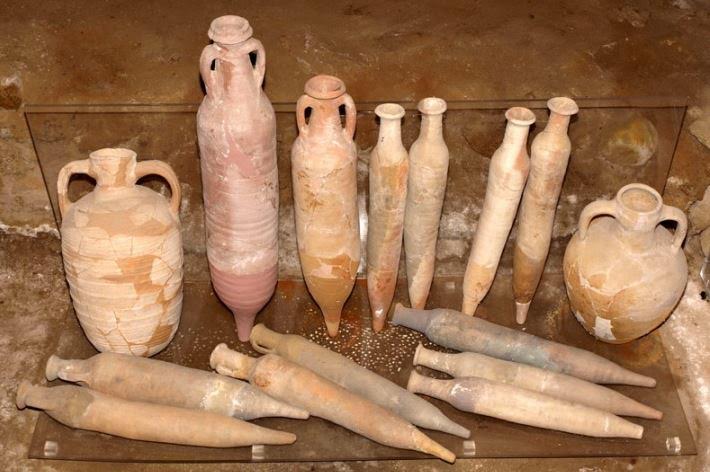
Garum amphorae
Just as with wine and olive oil, there were different grades of garum that were priced accordingly, as Pliny alludes to in the quote above.
Not all gara were created equal, and there were different recipes from different ports. The best was said to be from the Iberian Peninsula, in Hispania, particularly from Carthago Novo (Cartagena), and Gades (modern Cadiz in Andalusia).
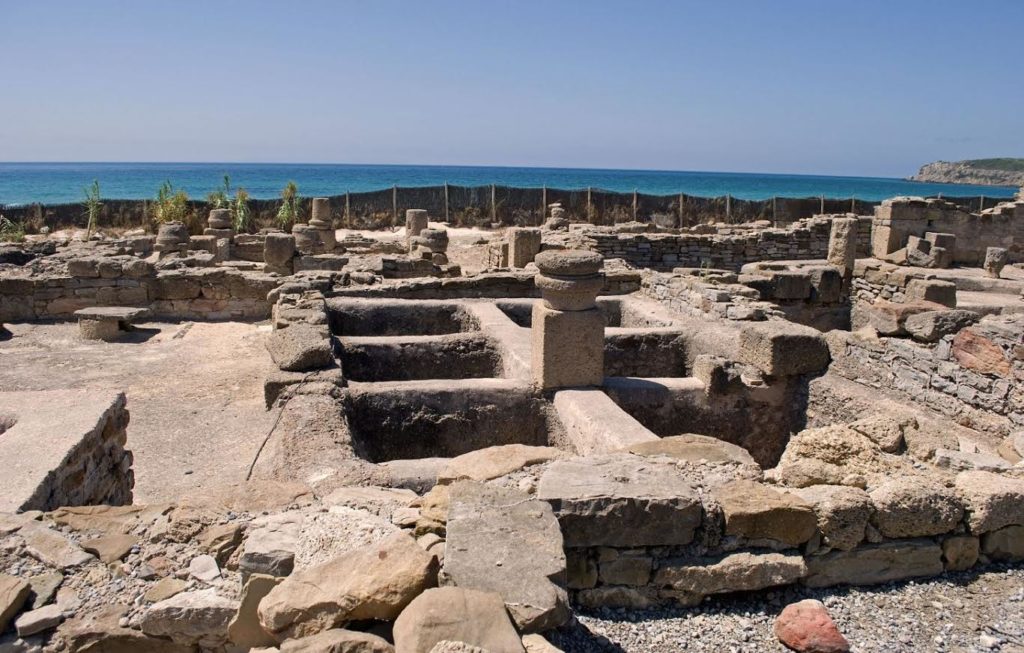
Ruins of a garum factory in Spain
Different fish were used in garum too, depending on the company, recipe, and place where it was made. Some of the most common were mackerel, anchovies, sprats, sardines, tuna, and even shell fish. Archaeology has also revealed the production of kosher garum among Roman Jews.
You might think that every person in the Empire loved garum, but not everyone was a fan, including Seneca, whose family was from Hispania:
What? Do you suppose that those oysters, a sluggish food fattened on slime, do not weigh one down with mud-begotten heaviness? What? Do you not think that the so-called “Sauce from the Provinces,” the costly extract of poisonous fish, burns up the stomach with its salted putrefaction? What? Do you judge that the corrupted dishes which a man swallows almost burning from the kitchen fire, are quenched in the digestive system without doing harm? How repulsive, then, and how unhealthy are their belchings, and how disgusted men are with themselves when they breathe forth the fumes of yesterday’s debauch! You may be sure that their food is not being digested, but is rotting.
(Seneca, Ad Lucilium Epistulae Morales 95.25)
Seneca seemed like a rather more health-conscious person, so, perhaps like people today who ask for their Chinese food without MSG, he was aware (or disgusted by) the adverse effects of consuming too much of the over-pricey liquid that Pliny believed was “exquisite in nature”.
I suppose the tastes of the people in the Roman world were as vast and varied as the Empire itself.
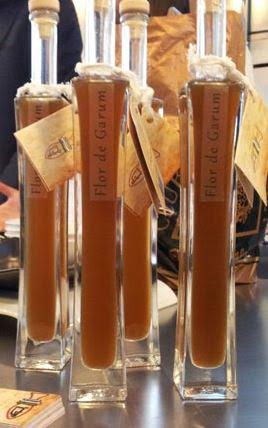
Modern garum
For myself, I’ll give garum or its modern equivalent a miss, but that’s not to say people don’t go in for it today. Maybe you do as well?
Thank you for reading!



